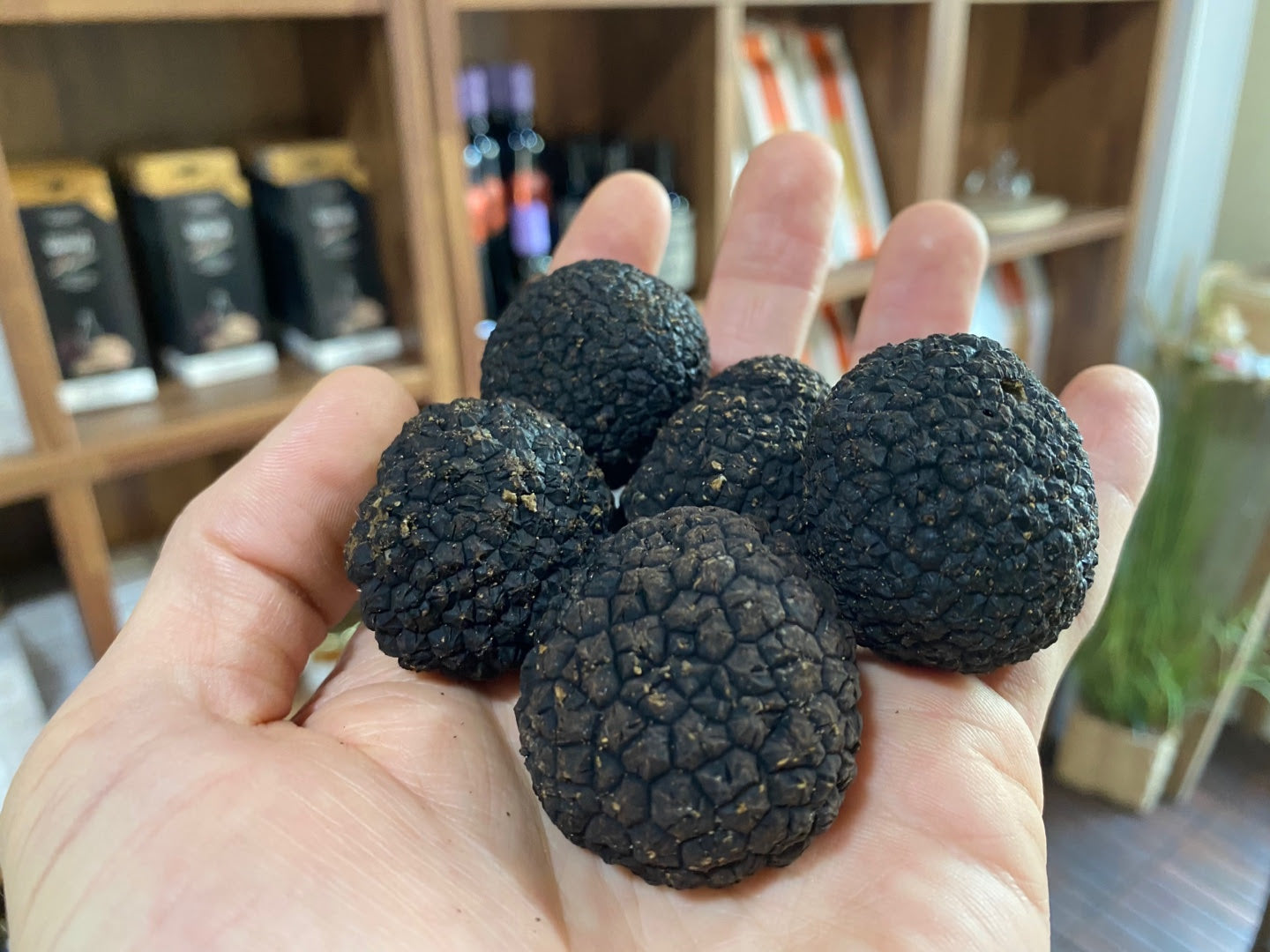
Hello,
Today I would like to talk about truffles (Western truffles), which are called diamonds in the ground. Truffles are known as one of the world's top three delicacies, and have recently become a very familiar cooking ingredient to domestic consumers through truffle oil. Since it is a food ingredient that is famous all over the world, there are many different types of it.
Today I will explain about Autumn Black truffle Burgundy.


Burgundy truffles vary greatly in size and shape, with an average diameter of 2 to 10 cm.
In addition, burgundy truffles are usually round, bumpy, and lopsided in shape, and the surface of burgundy truffles shows a variety of colors, ranging from brownish black, dark brown, and grey-black.
It is also covered with many fissures and pyramid-shaped pointed surfaces, also called protrusions, measuring 3-9 mm in diameter.
Each small diamond-shaped protrusion is angled with four to six sides, giving it a rough, bumpy feel.

What about the inside of a burgundy truffle?
Beneath the bumpy surface, the contents of the burgundy truffle are brown or tan, with the white part of the marbling. The interior of the burgundy truffle is very soft and spongy.

Burgundy truffles have a light, nutty flavor with notes of hazelnuts, wild mushrooms, and garlic, while the inside of the truffle is soft, musky, and earthy.
Burgundy truffles are one of the most widespread truffle species in Europe and are favored in Europe for their unique black nut aroma, earthy aroma, and delicate taste. Additionally, burgundy truffles are traditionally an ingredient often used in high-end Italian and French cuisine.
In Italian it is called Tartufo Nero di Fragno or Scorzone Invernale, and in French it is known as Truffe de Bourgogne. Burgundy truffles are also often used as a substitute for the more expensive and rare Perigord truffle.

Burgundy truffles are hand-harvested throughout Europe from September to January, during the fall and winter months. Additionally, this burgundy truffle is harvested and sold for a limited period of time to distinguish it from Tuber aestivum, the summer truffle.
Compared to summer truffles, burgundy truffles, which are fall truffles, have a stronger scent and taste, so they are sold under different names.
So what is the nutritional value of burgundy truffles with such excellent taste and aroma?
Like other black truffle varieties, burgundy truffles are a good source of vitamin C, which strengthens the immune system, and phosphorus and calcium, which strengthen bones and teeth.
Burgundy truffles also contain fiber that regulates the digestive tract, antioxidants that protect cells from free radical damage, and lower amounts of manganese, magnesium and iron.
Next, let’s look at recipes using burgundy truffles!
Burgundy truffles are typically sliced raw or suitable for adding flavor to thinly sliced dishes.
Truffles should be added at the end of cooking preparation as a finishing touch, as prolonged heat reduces the flavor of truffles.
The savory and aromatic taste of Burgundy truffles complements dishes with fatty and rich elements, especially those made with wine or cream sauces, oils or neutral ingredients such as potatoes, rice and pasta.
Truffles should be washed before use, and it is better to brush or scrub the surface rather than rinsing them in water, as moisture can lead to mold rot.
After cleaning, burgundy truffles can be used as a flavoring on tops of toasted bread, salads, pasta, risotto, soups and eggs, such as bruschetta, or added to sandwiches such as macaroni and cheese, casseroles and grilled cheese.

